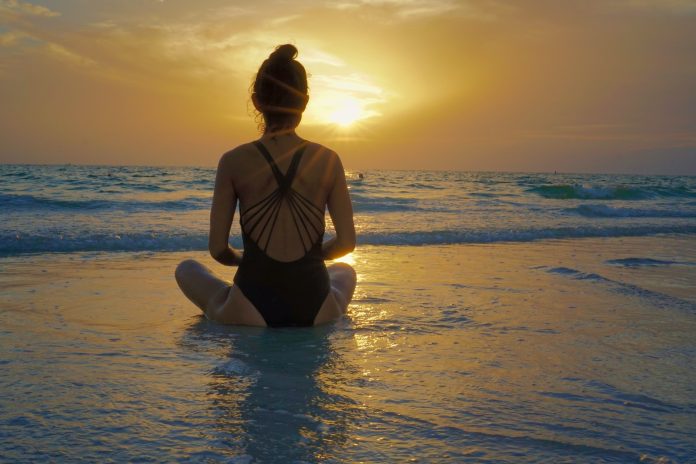Fitness wear is no longer just about practicality—it’s a key element of style that has evolved over the years. Whether you’re hitting the gym, going for a run, practicing yoga, or taking part in a high-intensity interval training (HIIT) class, the right fitness wear can make all the difference in your comfort, performance, and overall experience. However, with so many workout clothes to choose from, it can be overwhelming to know what to wear and when.
To make the most out of your workout, it’s important to match your fitness wear to the activity you’re engaging in. Different types of workouts demand different levels of support, flexibility, and breathability, so understanding the function of each piece in your wardrobe is essential. In this essay, we’ll explore how to select the appropriate fitness wear for different workouts, and why the right combination of clothes can enhance both your performance and your comfort. We’ll also discuss the importance of fabric, fit, and features that make workout wear suitable for specific fitness activities.
- The Importance of Comfort and Function in Fitness Wear
Before diving into how to match your fitness wear to your workout, it’s crucial to understand why comfort and function are so important. During any form of exercise, your body is in motion, and the last thing you want is to be distracted by clothing that’s uncomfortable, restrictive, or ill-fitting. Fitness wear should be designed to support your body’s natural movements and provide flexibility, moisture-wicking properties, and durability.
For instance, a tight-fitting outfit that doesn’t allow for proper movement can impede your ability to perform certain exercises, while an ill-fitting, loose outfit might cause chafing or get in the way. The materials you choose—whether they’re moisture-wicking fabrics or breathable cotton—can also affect how your body regulates temperature and stays dry during exercise.
Matching your fitness wear to your workout is about making sure that each piece of clothing enhances your performance, helps you maintain comfort, and supports your body throughout your session. Understanding the needs of your specific workout can guide you in selecting the best attire for the job.
- Choosing the Right Fitness Wear for Different Workouts
Now that we’ve established the importance of comfort and function, let’s break down the best fitness wear for specific types of workouts. Whether you’re running, doing strength training, or practicing yoga, each activity has unique demands on your body, and your workout attire should reflect that.
Running: Breathability and Support Are Key
Running is an activity that requires free movement and ample breathability, making it essential to wear clothing that allows for an unrestricted range of motion. For runners, moisture-wicking fabrics are a must. These materials—such as polyester, nylon, or specialized blends—help to pull sweat away from your skin, preventing chafing and discomfort while also keeping you cool.
For women, a good sports bra is crucial for support. Look for a sports bra that offers adequate compression or encapsulation to reduce movement and provide comfort, especially during long runs. For bottoms, consider wearing moisture-wicking leggings or shorts, depending on the weather. Compression tights are also an excellent option for those seeking muscle support, as they help improve circulation during a run and aid in recovery afterward.
For men, running shorts with an integrated liner provide comfort and support. T-shirts or moisture-wicking tanks are ideal for keeping sweat at bay and preventing overheating. In cooler weather, layering with a lightweight jacket or a long-sleeve moisture-wicking shirt is beneficial, as it allows for easy movement while protecting against the chill.
Strength Training: Flexibility and Durability
When it comes to strength training, your focus should be on flexibility, durability, and support. You’ll want to wear clothing that allows for a wide range of motion, especially in exercises that involve squatting, lifting, or bending. Breathable fabrics are also essential to keep you cool, as strength training can sometimes be an intense workout.
For both men and women, well-fitted leggings, shorts, or gym-specific pants are ideal. These garments should stretch with your body as you move, offering both comfort and durability. For upper body workouts, wear moisture-wicking, fitted shirts or tanks that allow for ease of movement, as loose clothing may get caught in equipment.
Another important consideration is footwear. Strength training demands proper footwear that provides stability and support. Flat shoes or specialized lifting shoes are great for exercises like squats or deadlifts because they ensure a solid connection with the ground, which is key for maximizing power and safety.
Yoga: Flexibility, Comfort, and Breathability
Yoga requires a great deal of flexibility, stretching, and breathing, which means your workout clothes must offer freedom of movement while also providing comfort. The right yoga wear should allow you to bend, twist, and stretch without feeling restricted. Cotton fabrics are a good option for beginners, as they are breathable and soft against the skin, but advanced yoga practitioners often prefer moisture-wicking fabrics to keep sweat at bay.
For women, yoga pants or leggings are a popular choice, as they allow for the fluid movement required during poses. A well-fitted sports bra or a supportive tank top can provide comfort during stretches and inversions, while also allowing you to focus on your practice instead of adjusting your clothing. Look for yoga clothes with a waistband that won’t dig into your skin during floor poses or inversions.
For men, fitted leggings or comfortable shorts paired with moisture-wicking t-shirts or tanks are a great choice. The key is to ensure that the outfit is breathable, lightweight, and doesn’t restrict your range of motion in poses like Downward Dog or Warrior II.
HIIT and Cardio Workouts: Sweat-Wicking and Breathable Fabrics
High-intensity interval training (HIIT) and cardio workouts demand clothing that can handle sweat and high levels of movement. These workouts are intense and often involve jumping, running, and various dynamic movements, so your fitness wear should stay in place and keep you cool. The ideal attire for HIIT includes sweat-wicking fabrics, flexible materials, and supportive designs that ensure comfort throughout your workout.
For both men and women, fitted leggings or compression shorts are a good choice, as they provide support and won’t shift during exercises. Choose tops made of lightweight, moisture-wicking fabric that allows for proper ventilation, helping to keep you dry throughout the workout. For HIIT, the flexibility of the fabric is just as important as breathability, as you’ll be moving rapidly from one exercise to another.
Footwear is also critical in HIIT, as the workouts often involve jumping and quick directional changes. A cross-trainer shoe is ideal for HIIT, offering both stability and flexibility, allowing you to perform lateral movements and jumps with ease.
- Additional Considerations: Fabric, Fit, and Features
When selecting your fitness wear, three key factors should always be considered: fabric, fit, and features. These elements not only influence your comfort but can also enhance your workout experience.
Fabric: The fabric of your fitness wear should be chosen based on the type of workout you’re doing. Look for moisture-wicking, breathable fabrics for high-intensity activities and strength training. For low-intensity workouts like yoga or Pilates, cotton or other soft fabrics may be preferable. Consider fabrics that offer compression for support, especially for running and strength training.
Fit: The fit of your clothing is crucial. Workout clothes that are too tight can restrict movement, while those that are too loose may hinder your performance or cause discomfort. Make sure that your fitness wear fits snugly but allows for flexibility and movement. Stretchy leggings and fitted tops offer a great balance between comfort and support, ensuring you’re not distracted during your workout.
Features: Modern fitness wear often comes with added features that can make your workout more comfortable. Look for clothing with built-in UV protection for outdoor runs or exercises. Some workout wear also includes pockets for small items like keys or your phone, which is particularly helpful if you plan on doing outdoor activities. Reflective details are also a bonus for outdoor exercise in low-light conditions.



